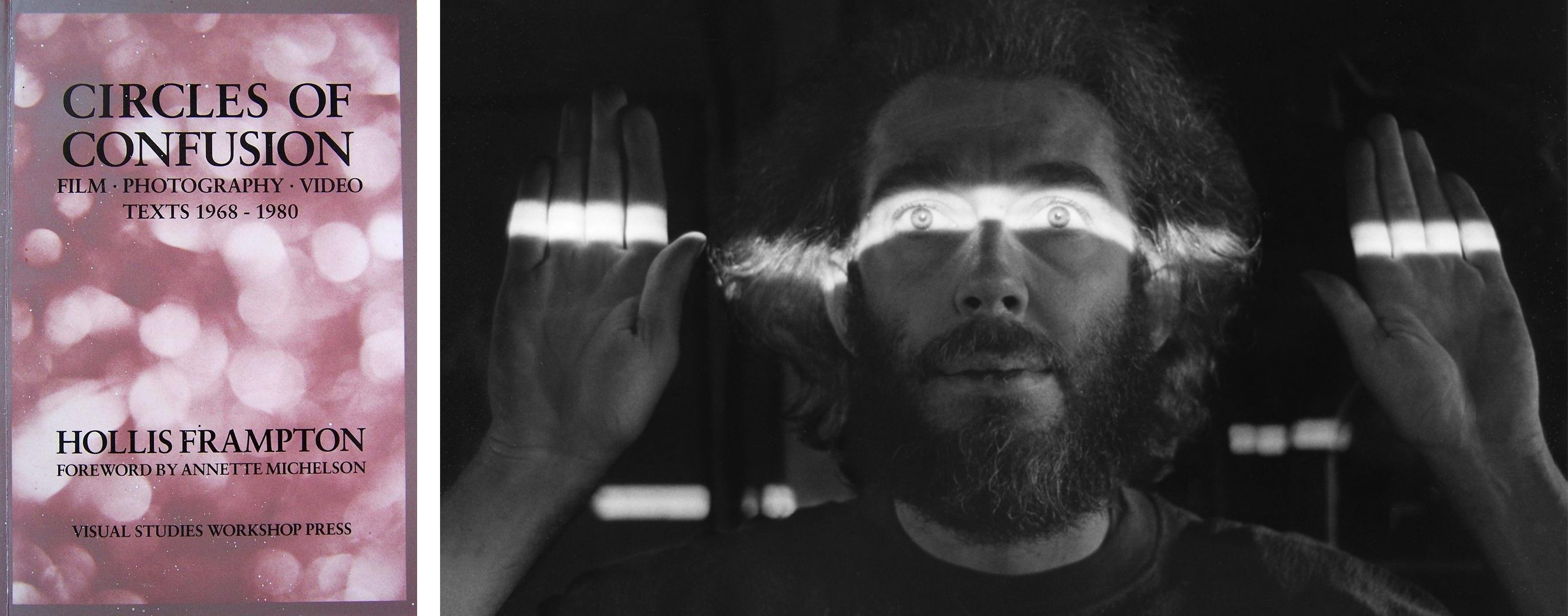
On the left is a book called Circles of Confusion: Film · Photography · Video: Texts 1968-1980 that was written by the man on the right who was (in his lifetime, from 1936 until 1984) and is called Hollis Frampton. It is a book of essays, most of which were originally published in Artforum magazine when it was edited by Annette Michelson, a film theorist and critic whose abundant and energetic wing fostered three generations of scholars and filmmakers, including and perhaps especially, Hollis Frampton.
Visual Studies Workshop Press in Rochester, NY, published the collection. The connection between VSW, Rochester, and Frampton is not as obscure as it might seem: Frampton taught at SUNY Buffalo in the 1970s, the campus of which is situated roughly 70 miles west of Rochester, home of Kodak, and therefore a center of film manufacturing.
Such connections are, rudimentarily speaking, the stuff of Frampton’s thought and work. He came to still photography via Ezra Pound and James Joyce; to filmmaking via still photography, painting, and a devotion to mathematics and science; to video and photocopiers via filmmaking and a return to still photography.
His films run the gamut from his earliest efforts whose concern was primarily motion (e.g. Manual of Arms, 1966) to found-footage films (e.g. Maxwell’s Demon, 1968) to so-called structural [footnote]I’m not sure I agree with the entirety of this page’s explanation but it does serve to provide a definition of this kind of filmmaking. I prefer to view structural film, like film noir, as a style or method as opposed to a genre.[/footnote] works (e.g. Lemon, 1969; in this case a full-frame shot of a lemon subjected to a range of light and exposure, about which Frampton said, “As a voluptuous lemon is devoured by the same light that reveals it, its image passes from the spatial rhetoric of illusion into the spatial grammar of the graphic arts.”) to the unfinished Magellan, which was intended to expand to include a film for each day of a 371 day cycle. A spirit of inquiry, a sense of humor, and a feeling for the necessity of art infuse his writing as they do his films. These are curious works, works of a curious mind, works for curious minds.